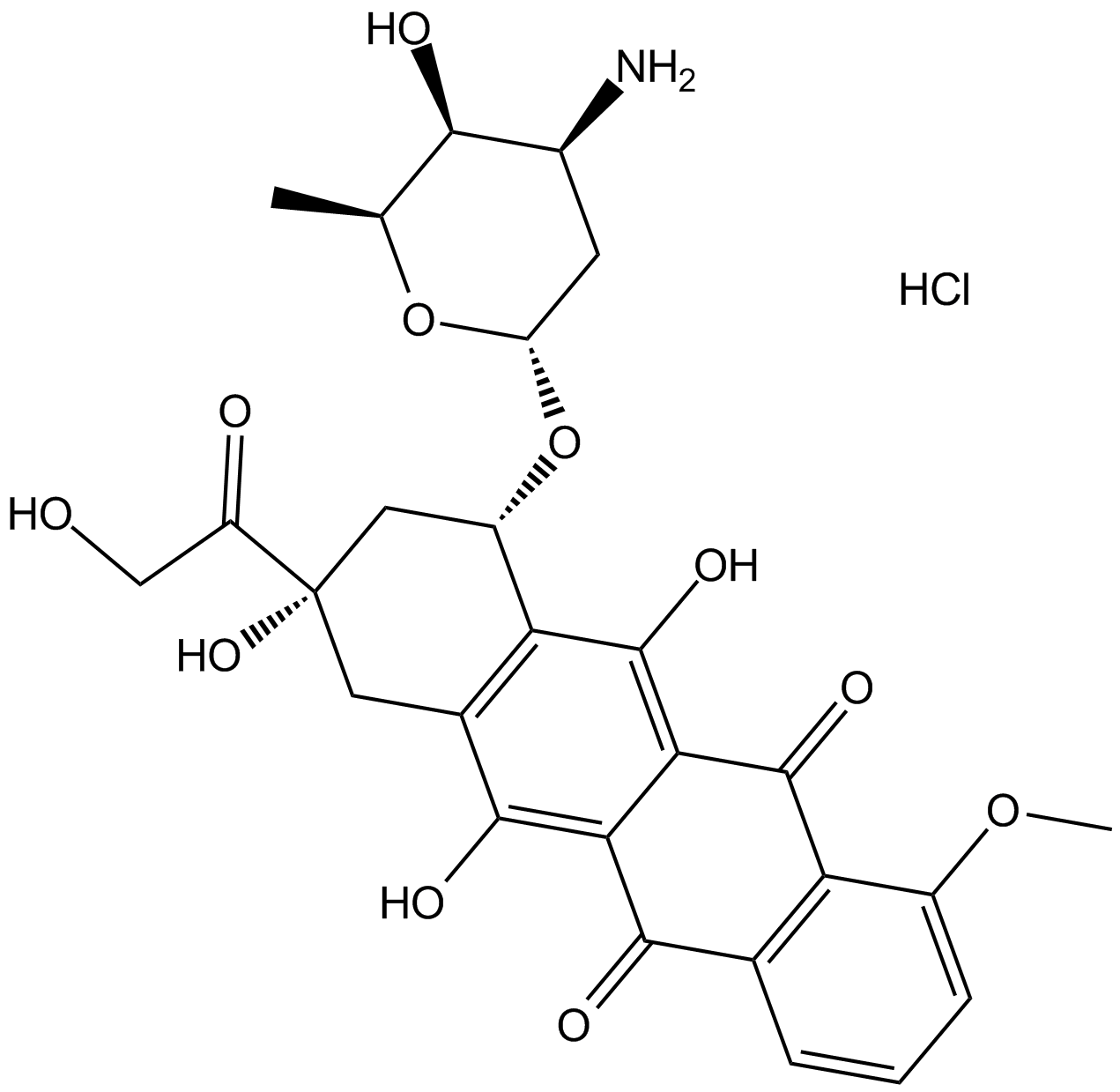Doxorubicin (Adriamycin) HCl (Synonyms: DOX) |
| Catalog No.GC17567 |
Le chlorhydrate de doxorubicine (hydroxydaunorubicine), un antibiotique anthracycline cytotoxique, est un agent chimiothérapeutique anti-cancer.
Products are for research use only. Not for human use. We do not sell to patients.

Cas No.: 25316-40-9
Sample solution is provided at 25 µL, 10mM.
La doxorubicine est un agent anticancéreux semi-synthétique dérivé de la culture bactérienne. [1] C'est un antibiotique anthracycline. Elle est largement utilisée dans les cancers du sang, les tumeurs solides et les sarcomes.
La doxorubicine s'intercale dans la double hélice de l'ADN et inhibe la progression de la topoisomérase II de l'ADN, arrêtant ainsi le processus de réplication. [2] La doxorubicine induit également l'éviction des histones du chromatine ouverte, causant des dommages à l'ADN et une dérégulation épigénétique. [3]
La doxorubicine est administrée par voie intraveineuse. Environ 75% de la doxorubicine et de ses métabolites se lient aux protéines plasmatiques. La doxorubicine ne traverse pas la barrière hémato-encéphalique. 50% du médicament est éliminé inchangé du corps principalement par excrétion biliaire. Le reste subit une réduction à un électron, une réduction à deux électrons et une déglycosylation. Le principal métabolite est un inhibiteur puissant de la pompe ionique membranaire, qui est associé à une cardiomyopathie. [4]
References:
[1]Brayfield, A, ed. (2013). Doxorubicin. Martindale: The Complete Drug Reference. Pharmaceutical Press. Retrieved 15 April 2014.
[2]Pommier Y., et al. (2010). DNA topoisomerases and their poisoning by anticancer and antibacterial drugs. Chemistry & Biology 17 (5): 421–433.
[3]Pang, B., et al. (2013). Drug-induced histone eviction from open chromatin contributes to the chemotherapeutic effects of doxorubicin. Nature Communications 4 (5): 1908
[4]Boucek RJ., et al. (1987). The major metabolite of doxorubicin is a potent inhibitor of membrane-associated ion pumps. A correlative study of cardiac muscle with isolated membrane fractions. J of Biol Chem 262: 15851-15856.
Average Rating: 5 (Based on Reviews and 23 reference(s) in Google Scholar.)
GLPBIO products are for RESEARCH USE ONLY. Please make sure your review or question is research based.
Required fields are marked with *




